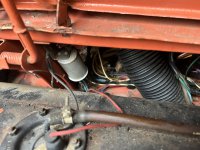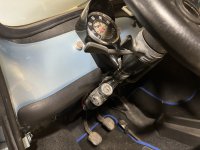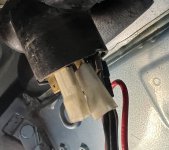Fiat1212
New member
I have an F model that I hadn't started in 10 years and after putting in fresh fuel, new gas tank, new fuel pump and new fuel lines I cranked it over, but it wouldn't fire. So put in a new coil and regulator and a 123 distributor, I got the same result - cranking but no firing. My spark plugs were wet with fuel. I tested my blue (positive) lead on the coil and I was getting voltage in.
I have no condenser or points to blame since I put in the 123 distributor. I also put in new spark plug cables. So I ran a lead direct from the Positive battery terminal to the positive coil and it started easily and ran well.
So I blamed my blue wire that runs from the 2nd fuse to the positive coil even though it tested very low resistance on the ohm meter. I made a new lead anyway and it showed voltage at the pos coil BUT the car would not start with this new wire.
I ran a direct lead from the battery again and it started up fine.
If I leave the blue lead in place and start with a direct lead from the battery, I find I can take away the direct lead and it will still run and not shut off until I turn the the key off, ( IE shut off the blue lead). If I start with no blue lead and just a direct from the battery the motor will shut off by disconnecting the direct lead.
I have no other quirky electrical problems, except my horn doesn't work. But I don't think those systems share any power. So, what obvious thing am I missing?
I have no condenser or points to blame since I put in the 123 distributor. I also put in new spark plug cables. So I ran a lead direct from the Positive battery terminal to the positive coil and it started easily and ran well.
So I blamed my blue wire that runs from the 2nd fuse to the positive coil even though it tested very low resistance on the ohm meter. I made a new lead anyway and it showed voltage at the pos coil BUT the car would not start with this new wire.
I ran a direct lead from the battery again and it started up fine.
If I leave the blue lead in place and start with a direct lead from the battery, I find I can take away the direct lead and it will still run and not shut off until I turn the the key off, ( IE shut off the blue lead). If I start with no blue lead and just a direct from the battery the motor will shut off by disconnecting the direct lead.
I have no other quirky electrical problems, except my horn doesn't work. But I don't think those systems share any power. So, what obvious thing am I missing?







